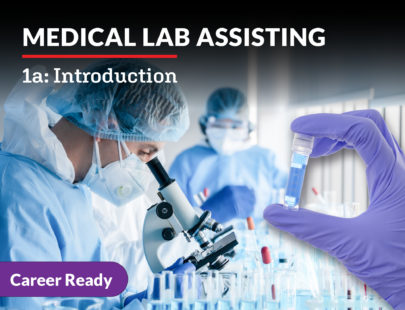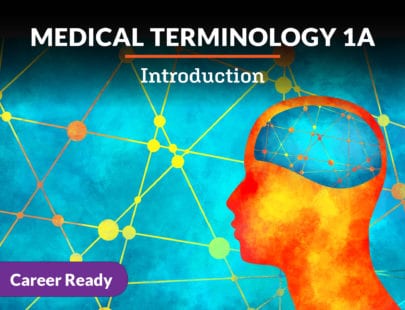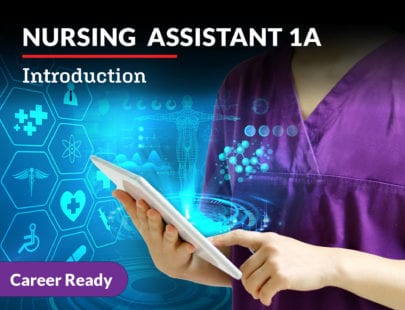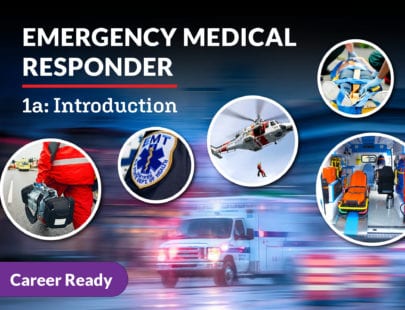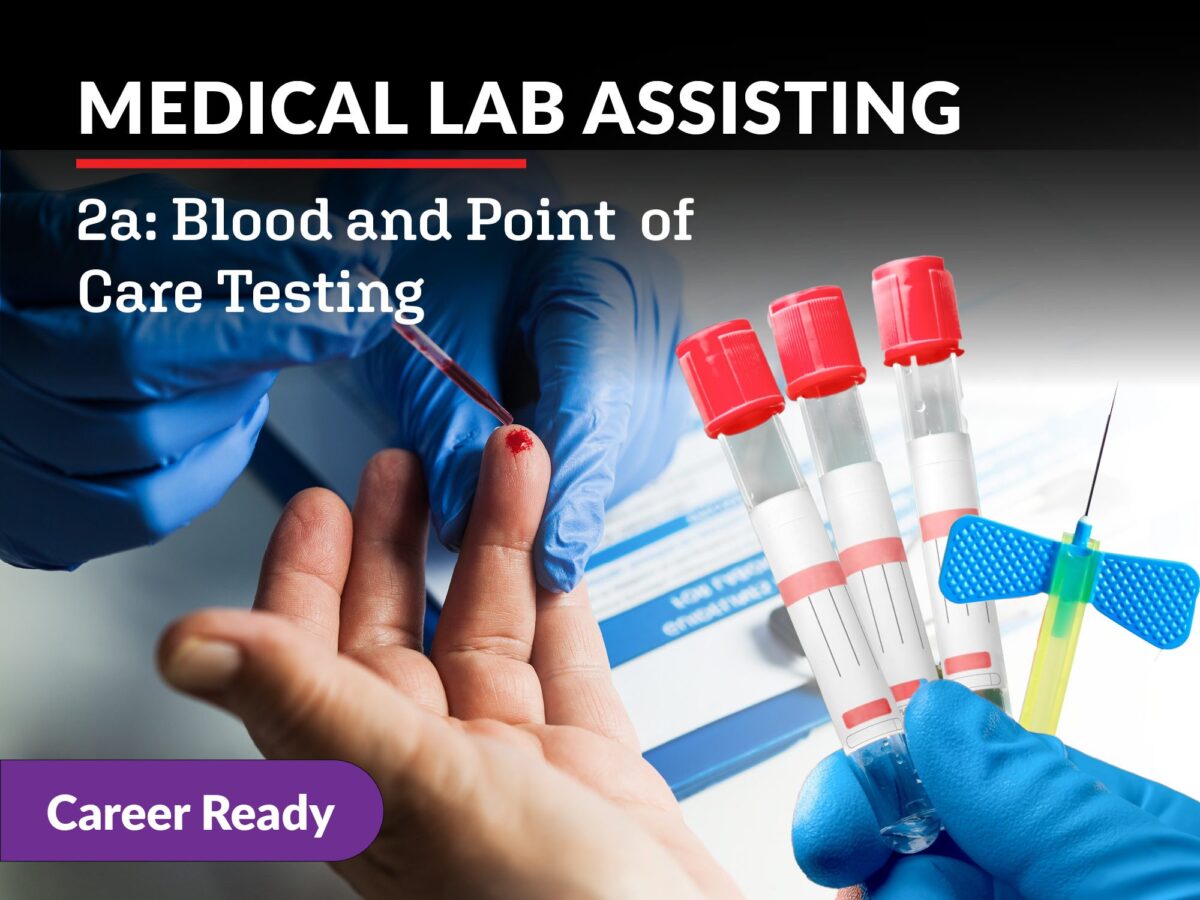
Medical Lab Assisting 2a: Blood and Point of Care Testing
It’s time to roll up your sleeves—and your patient’s sleeves, too— and dig into phlebotomy even deeper. In this course, you will explore advanced phlebotomy techniques, blood disease pathology and testing procedures, and more about blood typing. You’ll build on your knowledge of blood cell behavior, counting, and clotting and all about the blood screening process from start to finish. You will also learn about lifespan considerations, troubleshoot issues common to the MLA, and expand your knowledge of point-of-care testing and reporting values. Now push those sleeves up high, and let’s get started!
Units at a Glance
Unit 1: Specialty Lab Procedures
Congratulations! You are on your way to becoming a medical laboratory assistant! You have spent time reading and learning the basic principles of how the medical laboratory works. There is still much to learn from acquiring advanced phlebotomy techniques, troubleshooting challenges to specimen collection, and reasoning through testing results. Now it is time to roll up your sleeves, pull on your gloves, and put the concepts you have spent hours learning to use!
What will you learn in this unit?
- Explain advanced phlebotomy concepts including the use of the butterfly needle and the risks of drawing too much blood
- Detail the steps of capillary puncture and collection
- Summarize pediatric punctures and troubleshoot difficult capillary punctures
- Identify precautions when working with infectious agents
- Describe the phases of the diagnostic testing process
Unit 2: Point-of-Care Testing
Imagine this: Before you is a test kit. The contents of this simple sealed package represent the culmination of laboratory knowledge and technology. Scaled-down, refined, and simplified, point-of-care testing allows expanded access to testing once only available in large medical laboratories. Knowing how to safely and reliably wield the power at your fingertips takes practice, focus, and critical thinking. The rewards are extensive for both the MLA and the patient, so let’s explore in-depth the world of point-of-care testing!
What will you learn in this unit?
- Identify common point of care tests, their characteristics, and disadvantages
- Explain internal versus external quality controls including lot-to-lot correlations
- Summarize principles behind and steps involved with point-of-care testing
- Discuss troubleshooting procedures for point-of-care testing and sample collection
Unit 3: Principles of Blood Diseases
What could be worse than your blood no longer working? Imagine if the fluid that keeps you healthy is no longer healthy. Diseases of the blood can affect any of the formed elements, which can spell disaster for the rest of the body. A good understanding of how these diseases manifest is the first step in knowing how we can test for them. Are you ready for another trip down the blood line?
What will you learn in this unit?
- Identify disease terminology and principles
- Describe hematopoiesis and red blood cell indices
- Explain the different classifications of leukocytes and the leukocyte differential
- Summarize the coagulation process and the causes of clotting disorders
Unit 4: Blood Counts and ESR
Can you count to a trillion? If there was a shortcut, would you want to learn it? Counting the trillions of cells in the blood could take a lifetime; fortunately, the medical lab has developed technology that speeds this up tremendously. Now it’s time to combine your background in hematology with this technology and some new techniques. Knowledge really can get the blood pumping; you can count on it!
What will you learn in this unit?
- Identify the tests and equipment used in the complete blood count
- Describe the methods used for automated and manual cell counts
- Explain the steps of manual RBC and WBC counting
- Summarize the principles and performance of erythrocyte sedimentation rate (ESR)
Unit 5: Testing for Anemia and Clotting
Do numbers tell a story? What about a blood cell? From anemia to altered bleeding, we can learn a lot from digital screens and microscopes. Testing gives us a clearer picture of what we’re working with, so diagnosis and treatment can be more finely tuned. Let’s take a closer look at anemia and clotting, along with their specific testing and procedures.
What will you learn in this unit?
- Describe hemoglobin testing and quality control procedures
- Detail the steps of hematocrit testing and calculations
- Identify different anemia forms, detection methods, and treatments
- Explain manual platelet counting and bleeding times
- Summarize platelet function, partial thromboplastin, and prothrombin testing
Unit 6: Blood Typing Principles
A candle disperses its flickering light across the cold damp room, causing a metal tool to glimmer in an ungloved hand. A warning is spoken, and the patient braces themself for what is to come. This scenario gives a hint of what blood transfusions might have been like a few hundred years ago. Organizations involved in oversight and advancements in technology have made what was once a dangerous exercise a common lifesaving process. Let’s explore how we got to this point in history and when medical treatments began including blood type.
What will you learn in this unit?
- Detail the different types of blood and their occurrences in the population
- Summarize the development and principles of the ABO system
- Explain the Rh system of blood types and its clinical considerations
- Describe the creation of blood antigens and blood products
- Identify the blood supply oversight organizations
Unit 7: Preparing Blood Products
A patient is rushed into the hospital with a life-threatening emergency. The physician orders a blood transmission to save their life. In these moments of crisis, the medical providers need to be sure the transfusion is safe. Trust in the blood product in the bag is essential to providers. The story of how the product gets from donor to patient could not take place without the personnel of the medical lab. To understand transfusions, you need to start with a unit full of blood.
What will you learn in this unit?
- Summarize blood donor screening and collection procedures
- Identify blood infections and the clinical importance of antibodies in donations
- Describe blood typing and leukocyte removal procedures
- Explain the creation of blood products and their storage procedures
- Detail crossmatching, storage locations, and the uses of blood products
Unit 8: Special Reporting Procedures
The man’s tight lips and furrowed brow convey his emotions. Could this level of tension have manifested from just a few words and numbers on a page? Lab results can be upsetting. Offering the highest level of care is the principle that should guide your interactions with patients and their providers. Critical thinking and adaptability are requirements for all members of the healthcare team, in any situation. The lab supports the patient’s care through timely, accurate, and empathetic collection and reporting of lab results.
What will you learn in this unit?
- Detail the considerations of patient interactions and elements of documentation
- Identify the criteria for triage and its impact on reporting of test results
- Explain reporting in the point-of-care setting including critical values
- Summarize the concepts of mean, median, mode, and confidence intervals
- Describe autoverification and protocols for reporting and correcting results
Required Materials
Physical
- All-purpose white flour
- Calculator
- Digital camera
- Oral or meat thermometer (digital or dial)
- Soy sauce
- Spoon
- Tall clear glass
- Tape measure or ruler
- Timer
- Water
- Writing supplies
Software
- Presentation software
- Word processing software
Optional
- Art supplies
- Audio recording device
- Flashcards
- Graphic design software
- Household items
- Phone
- Props
- Video recording device
